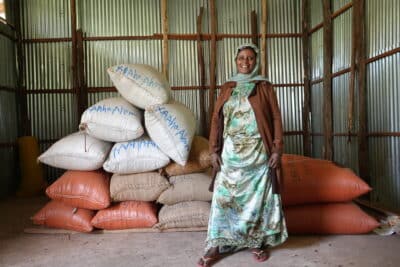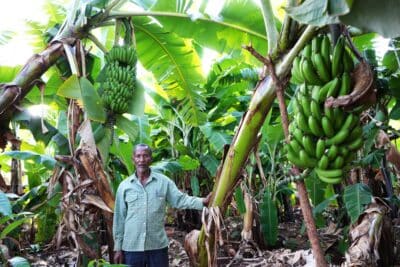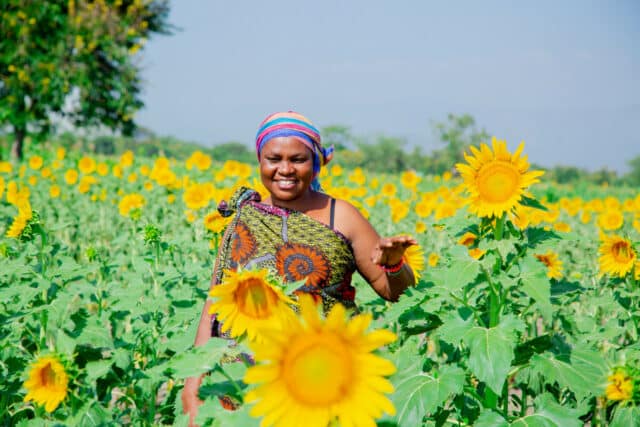News
27 August 2021
UNFSS Independent Dialogue on Food Loss and Waste in Kenya

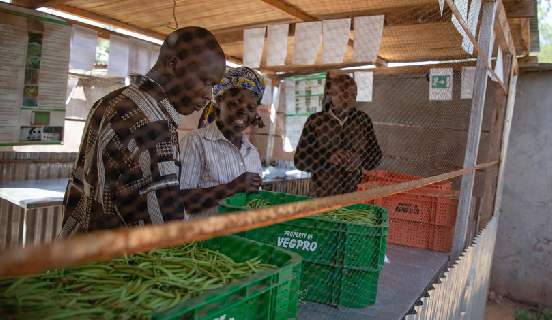
A summary of the discussions from the UNFSS independent dialogues in Nairobi, Kenya.
By Anastasia Mbatia, Technical Manager, Agriculture, Farm Africa.
In July 2021, Farm Africa independently convened a UN Food Systems Summit dialogue exploring the theme of GAPS, OPPORTUNITIES AND BARRIERS IN FOOD LOSS AND WASTAGE IN KENYA’S FOOD SYSTEMS.
The dialogue was held in the run-up to the UN Food Systems Summit, which is being convened in New York in September 2021 as part of the Decade of Action to achieve the Sustainable Development Goals (SDGs) by 2030.
The Summit will launch bold new actions to deliver progress on all 17 SDGs, each of which relies to some degree on healthier, more sustainable and equitable food systems.
The dialogue hosted participants from diverse stakeholder groups to explore food loss and wastage in Kenya’s food systems. The expected outcome of the dialogue was to ignite conversations at different levels of governance from the grassroots to policy that critically looks at food loss and food wastage prevention as a mechanism for the country’s food security.
This blogpost outlines relevant context and summarises findings of the dialogue.
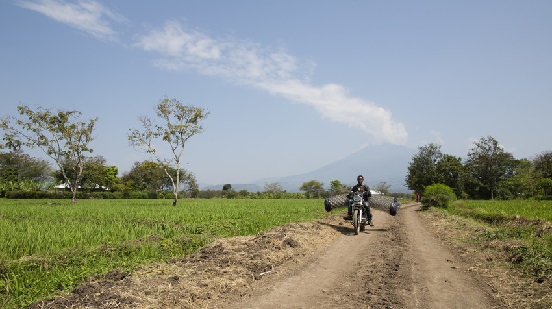
Context
Kenya is still grappling to achieve SDG Goal 2: Zero Hunger. Food insecurity and malnourishment plague millions of Kenyans every day. An estimated one in three Kenyans is food poor, which translates to 33% of the population.
Food loss and food waste drains $940 billion from the global economy every year. This is estimated to represent one third of global food production. Of the food that reaches consumers, 40% is thrown away. Nearly 30% of harvested crops in sub-Saharan Africa go to waste with dire implications for food security, nutrition, environment and small-scale farmers’ incomes.
The amount of food lost or wasted every year could feed an estimated 1.6 billion people but instead, 795 million people are going hungry worldwide. The impact on the environment is staggering, with more than 25 percent of the world’s fresh water and 20 percent of its farmland used to produce food that is never consumed. Additionally, food loss and waste generates about eight percent of global greenhouse emissions (FAO, 2011).
The 2030 Agenda for Sustainable Development reflects the increased global awareness of the problem. Target 12.3 of the Sustainable Development Goals calls for halving per capita global food waste at retail and consumer levels by 2030, as well as reducing food losses along the production and supply chains. Everyone has a part to play in reducing food loss and waste.
In Kenya, food loss and wastage accounts for Ksh 72 billion (£0.48 billion) annually due to wasteful consumption. The Food Waste Index Report 2021 by UNEP and Waste and Resources Action Programme (WRAP) indicates that every Kenyan throws away an average of 99 kilograms of food every year, with the country wasting a total of 5.2 tonnes of food every 12 months.

Food loss is the decrease in the quantity or quality of food resulting from decisions and actions by food suppliers in the chain, excluding retailers, food service providers and consumers. Empirically, it refers to any food that is discarded, incinerated or otherwise disposed of along the food supply chain from harvest/slaughter/catch up to, but excluding, the retail level, and does not re-enter in any other productive utilisation, such as feed or seed.
Food waste refers to the decrease in the quantity or quality of food resulting from decisions and actions by retailers, food service providers and consumers. Food is wasted in many ways: fresh produce that deviates from what is considered optimal, for example in terms of shape, size and colour, is often removed from the supply chain during sorting operations. Foods that are close to, at or beyond the “best-before” date are often discarded by retailers and consumers. Large quantities of wholesome edible food are often unused or left over and discarded from household kitchens and eating establishments.
Less food loss and waste would lead to more efficient land use and better water resource management with positive impacts on climate change and livelihoods.
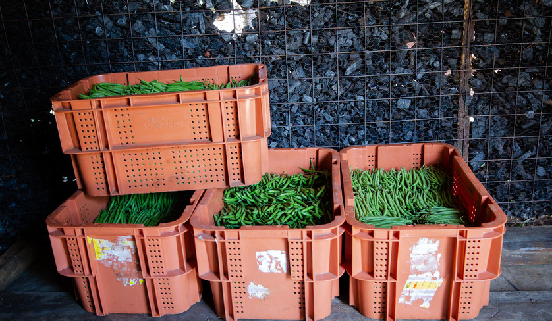
Dialogue Findings
1: Which gaps exist in our food system that contribute to food loss and wastage?
Farm management constraints:
- Attacks by pests and diseases at the farm level lead to high post-harvest losses.
- Lack of cold-chain and other required storage facilities at production level lead to produce going bad.
- Contamination of milk during milking, transportation or bulking leads to spoilage and thus milk loss.
- Many farmers do not follow guidelines offered in technical assistance such as planting timing eg the requirement to plant seeds within a week of collection of seeds. Instead they keep the seeds and plant them later on, even after a couple of months. This leads to wastage of food, as produce floods the market due to lack of planting coordination.
- Food safety is not taken seriously by farmers, especially when it comes to meeting international standards and requirements on food production systems such as the use of pesticides. If these are not followed, there is a high rejection rate of produce, which then goes to waste.
Market supply gaps:
- International markets collapse from factors such as pandemics, eg COVID-19 or other factors leading to reduced demand of fresh produce from international markets, thus farmers are left with produce they can’t sell.
- Farmers engaging with brokers instead of having standing contracts with exporters can leave them in the lurch if the brokers do not secure the promised markets.
- The high cost of Kenyan produce (due to high production costs) in international markets leads to low demand, with unsold produce going to waste.
- Poor adherence by farmers to international market requirements and lack of certification systems for export produce constrains the amount of produce that be sold internationally.
Low circular economy opportunities:
- Fresh produce exporters not sticking to their commitments due to poor market projections. This results in exporters being unable to buy from the farmers the contracted amount of produce and as a result harvested produce goes to waste. Some fresh exporters like VegPro use the excess produce for the production of bio-energy and the generated power is even sold to KenGen. This practice is not common among the fresh produce offtakers.
- There is a need to strengthen food systems from the grass roots level, improving the technical and productive capacity of the farmers in production systems that adhere to market specifications and improving understanding of market demand vs supply dynamics. This will help reduce food loss and wastage.
- Limited or low value addition of the exported fresh produce. Training on value addition through pre-cooking and bio fortification may reduce instances where harvested fresh produce goes to waste.
Policy related constraints:
- There is a lack of supporting policies and strategies on export of value added produce and a poor regulatory environment.
- There is poor local, national and international market access for all agricultural products. The challenging marketing environment does not favour or support farmers.
- There is low government support to the food system supply chain.
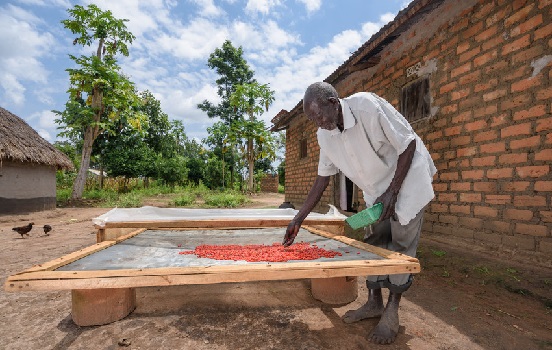
2: Infrastructure required to minimise food loss and wastage
- Better access is needed to post-harvest handling equipment eg solar dryers especially for the cereals and pulses value chains to ensure proper drying of produce to ensure food safety by reducing aflatoxin levels as well as cold chain management of vegetables from farms to packing areas to lower spoilage by reducing dehydration. Supporting fabrication of these technologies will increase access and make them more affordable to smallholders.
- The market for export produce especially vegetables needs to be diversified in such a way that grade 2 produce can be packaged and sold to the domestic market eg supermarkets, as opposed to the rejects being rendered as waste.
- Improving road networks especially in rural areas (rural-urban linkages) and rural electrification would ease transportation of farm produce to the end market. These are policy issues that the private sector and development partners can lobby on with the government.
- Value addition should be encouraged and supported so that farmers can get value for their money. Cooperatives in the dairy sector have been successful in this area and there are untapped opportunities in other value chains.
- Training is needed on sustainable and correct packaging of food for smallholder farmers to reduce losses as well as build the capacity of other value chain actors such as buyers on food handling.
- Supply chains need to be streamlined to bridge regional inequalities and ensure that food reaches all parts of the country. There have been instances where there is a glut in production leading to wastage of food in one region and famine in the other.
- Embracing digital innovations could increase market access for produce eg Twiga Foods’ approach of delivering food to customers’ doorsteps.
- Smallholder farmers’ financial access could be enhanced by using e-platforms to incentivise the farmers.
- Efforts are needed to increase access to market information as well as streamline prices.
- Food loss and waste management should be integrated into curriculum development so as to increase awareness. Management of food waste should also be enforced.
Actors
- Government
- Development partners
- Private sector
- Farmers
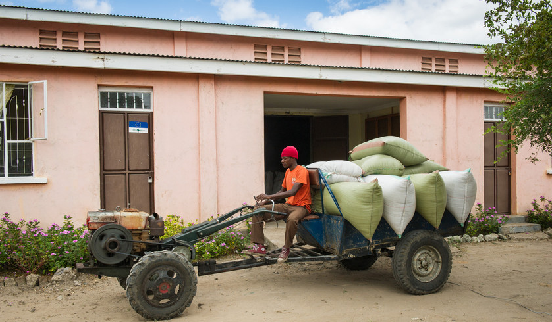
3: Potential barriers in food loss and pathways to address them
- Limited funding. Only 4% of the national budget goes to the agricultural sector in Kenya and 10% in Uganda yet it’s the mainstay of the two countries’ economies. This affects investment into food storage systems such as silos and other off-farm activities.
- Technology. Donors and governments focus on investing in interventions that enhance technology at farm level mainly in cereals and horticultural crops and little is done for off-farm activities with processors, manufacturers and consumers. In addition, governments have not fully promoted innovations around local technologies especially for cereal crops and existing storage facilities are not affordable, which greatly affects the shelf life of the products in local and export markets.
- Regulation. Governments have not fully enforced use of the right innovations and standards aimed at promoting reduction of food losses at farm and market levels. For example, all the players in cereals and potato value chains in Kenya should be mandated by law to use the newly recommended storage bags and embrace use of silos.
- Uncoordinated value chain actors. There is a gap in actors’ understanding of market specifications, requirements and standards to inform their investment activities while dealing with post-harvest handling challenges. Also, focus is majorly on farm-level activities to enhance production and aggregation and little is done by transporters, processors and food manufacturers to support reduction of post-harvest losses, storage and understanding consumer needs.
- Low community involvement. Most interventions funded are not contextualised, and there is a mismatch between community needs and solutions provided to address food losses, for example the solar dryers provided by a UNDP project in Nakuru county and seven other counties are not functional. The community does not have the required skills to operate the equipment provided to them.
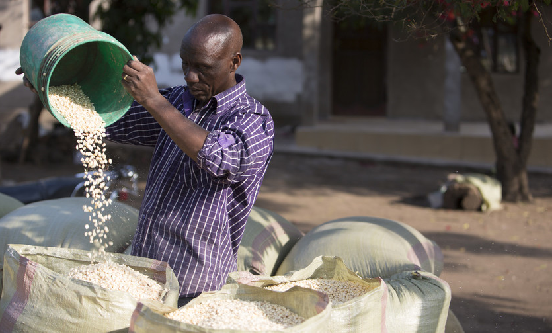
Pathways identified
- Improve coordination. Bodies such as Kenya Private Sector Alliance (KEPSA), Agribusiness Confederation of East Africa (ACEA), Agriculture Sector Network (ASNET) and farmer organisations need to be strengthened to provide consultative input to improve advocacy, production and strengthening capacities of their members to invest in systems that reduce post-harvest losses.
- Roll out the warehouse receipt system initiatives. This government initiative has worked well in the cereal sector and should be replicated in other industries in Kenya. Interventions were informed by a food assessment report conducted in 2012 whereby out of 37 million bags of cereals produced, 12% ended up as waste. Interventions promoted were geared towards increasing access to skills in post-harvest handling, access to financial services and reliable markets.
Food that is not eaten and dumped decomposes to produce methane, a greenhouse gas. The resources used to produce food are wasted when food goes to waste.
The hierarchy of solutions to address food loss and waste includes reducing instances where operations and practices are adopted to reduce food waste generation; ensuring recovering food waste through value addition and conversion of by products to other food products eg animal feeds; recycling of food waste to generate green energy (natural renewable gas) and other products like organic fertilisers. All these practices will lead to a circular economy when we reduce and convert food waste.
Everyone has a role to play in addressing food loss and waste – this includes governments, businesses, consumers and producers. Investments and an enabling environment are necessary to catalyse change as we work towards achieving SDG 2 (Zero Hunger) and 12.3 (Shift to Sustainable Consumption and Production).

